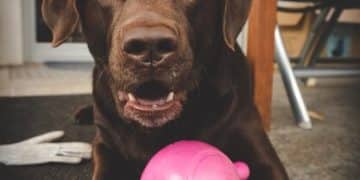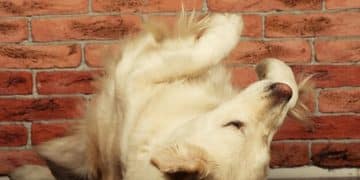Solve Chewing Problems: 4 Training Techniques to Stop Destructive Behavior
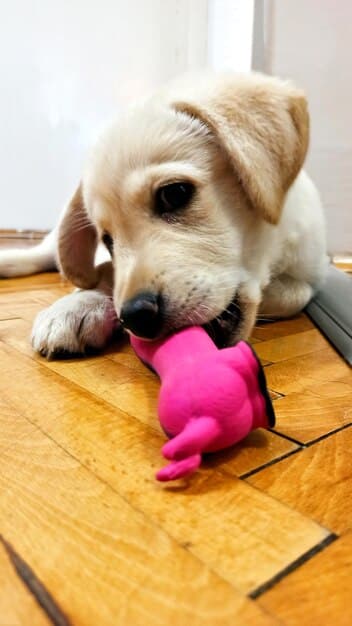
Is your dog’s chewing habit causing chaos? Discover four effective training techniques, including providing appropriate chew toys, redirection, creating a chew-proof environment, and consistent training, to redirect destructive chewing behavior and protect your belongings.
Is your beloved canine turning your home into a chew toy wonderland? Destructive chewing is a common issue for many dog owners, but the good news is that it’s often manageable with the right approach. Let’s explore chewing problems solved: Redirect destructive behavior with these 4 training techniques.
Understanding Why Dogs Chew
Before diving into solutions, it’s crucial to understand why dogs chew in the first place. Chewing is a natural behavior for dogs, serving various purposes from exploration to dental health. However, excessive or destructive chewing can indicate underlying issues that need addressing.
Natural Instinct
Chewing is deeply ingrained in a dog’s DNA. Puppies explore the world through their mouths, much like human babies. Adult dogs chew to keep their jaws strong and their teeth clean. Providing appropriate outlets for this instinct is key.
Boredom and Anxiety
Dogs left alone for extended periods, especially those without sufficient physical and mental stimulation, may turn to chewing out of boredom. Similarly, anxiety, whether separation anxiety or general nervousness, can trigger destructive chewing as a coping mechanism.
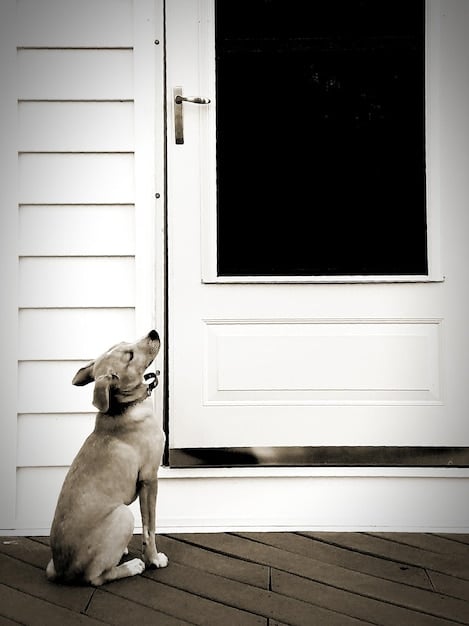
Understanding these motivations behind chewing is the first step in resolving the issue. Now, let’s look at actionable training methods to redirect this behavior.
Technique 1: Provide Appropriate Chew Toys
One of the most straightforward solutions to destructive chewing is to offer your dog a variety of suitable chew toys. This allows them to satisfy their natural chewing instincts without damaging your belongings. It’s important to experiment with different types to find what your dog enjoys most.
Variety is Key
Just like humans, dogs can get bored with the same old toys. Offer a rotating selection of chew toys with different textures and materials to keep them engaged. This could include rubber toys, rope toys, and even edible chews.
Safety First
Always choose chew toys that are safe for your dog. Avoid toys that can easily be broken into small pieces, as these pose a choking hazard. Supervise your dog during playtime with new toys to ensure they aren’t tearing them apart destructively.
- Rubber Toys: Durable rubber toys like Kongs can be stuffed with treats or peanut butter to keep your dog entertained for hours.
- Rope Toys: These are great for chewing and can also help clean your dog’s teeth. Make sure the rope is tightly woven to prevent unraveling.
- Edible Chews: Bully sticks, dental chews, and other edible options provide a satisfying chewing experience while also promoting dental health. Always supervise your dog with edible chews and choose appropriately sized options to prevent choking.
By providing a variety of safe and engaging chew toys, you can successfully redirect your dog’s chewing habits away from your furniture and personal items.
Technique 2: Redirection Techniques
Redirection is a powerful training method that involves interrupting your dog’s undesirable chewing behavior and guiding them towards a more appropriate outlet. This technique requires consistency and patience, but it can be highly effective in the long run.
Catch Them in the Act
The key to effective redirection is to catch your dog in the act of chewing on something they shouldn’t be. A firm but not angry, “No!” or “Leave it!” can startle them and interrupt the behavior.
Offer an Alternative
Immediately after interrupting the chewing, offer your dog an appropriate chew toy. When they take the toy, praise them enthusiastically. This reinforces the idea that chewing on their toys is a good thing.
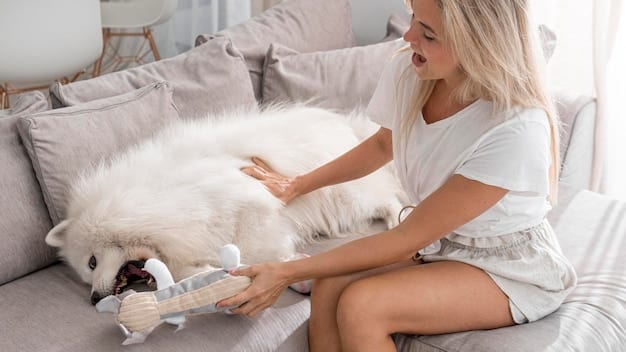
Consistency is Crucial
Redirection only works if you’re consistent. Every time you see your dog chewing on something they shouldn’t, intervene and offer a suitable alternative. Over time, they’ll learn what’s acceptable to chew on and what isn’t.
With consistent redirection, your dog will learn to associate chewing with their toys rather than your belongings. This will greatly reduce instances of destructive chewing and create a more harmonious living environment.
Technique 3: Create a Chew-Proof Environment
While training and redirection are essential, proactively creating a chew-proof environment can significantly reduce the temptation for your dog to engage in destructive chewing. This involves removing or limiting access to items they are likely to chew on.
Secure Valuables
Put away shoes, books, remote controls, and any other items that your dog might find appealing to chew on. Store them in drawers, closets, or on high shelves that are out of reach.
Limit Access
If you can’t remove certain items, limit your dog’s access to them. Use baby gates or close doors to restrict their access to certain rooms or areas of the house. For example, if they tend to chew on furniture in the living room, keep them out of that room when you’re not able to supervise them.
Use Deterrents
For items that you can’t move or restrict access to, consider using chew deterrents. These are typically sprays or gels with a bitter taste that discourage dogs from chewing on treated surfaces. Always test the deterrent on a small, inconspicuous area first to ensure it doesn’t damage the material.
- Bitter Apple Spray: A popular and effective chew deterrent with a strong, unpleasant taste that most dogs dislike.
- Citrus Sprays: Many dogs find the scent of citrus to be unappealing. You can use citrus-scented sprays or even rub citrus peels on furniture legs.
- Protective Covers: Consider using furniture covers or slipcovers to protect your furniture from chewing damage.
By making some strategic changes to your home environment, you can minimize the opportunity for your dog to engage in destructive chewing and set them up for success.
Technique 4: Consistent Training and Exercise
Consistent training and adequate exercise are crucial for addressing chewing problems. A well-trained and properly exercised dog is less likely to engage in destructive behaviors, including chewing.
Basic Obedience
Teaching your dog basic obedience commands like “Leave it,” “Drop it,” and “Stay” can be incredibly helpful in curbing their chewing habits. These commands give you more control over their behavior and allow you to redirect them more effectively.
Mental Stimulation
Mental stimulation is just as important as physical exercise. Puzzle toys, training sessions, and interactive games can help keep your dog’s mind engaged and prevent boredom, which is a common trigger for destructive chewing.
Regular Exercise
A tired dog is a good dog. Make sure your dog is getting enough exercise each day. This could include walks, runs, games of fetch, or visits to the dog park. The amount of exercise your dog needs will depend on their breed, age, and energy level.
Consistent training and exercise address the root causes of many chewing problems, providing your dog with the physical and mental outlet they need to stay happy and well-behaved.
Seeking Professional Help
If you’ve tried these training techniques and your dog’s chewing problem persists and is accompanied by other behavioral changes, it might be time to seek professional help. A certified dog trainer or veterinary behaviorist can evaluate your dog’s behavior and develop a customized training plan.
When to Consult a Professional
If chewing is obsessive, self-harming, or accompanied by other concerning behaviors like aggression, excessive barking, or withdrawal, consult a professional right away. These could be signs of a deeper problem that require expert intervention.
What to Expect from a Behaviorist
A veterinary behaviorist will conduct a thorough assessment of your dog’s behavior, medical history, and environment. They may recommend further testing to rule out any underlying medical conditions. Based on their findings, they’ll develop a comprehensive treatment plan that may include behavior modification techniques, medication, or environmental changes.
Don’t hesitate to seek professional help if you’re struggling to manage your dog’s chewing problem on your own. With the right guidance and support, you can help your dog overcome their chewing issues and enjoy a happier, healthier life.
| Key Point | Brief Description |
|---|---|
| 🦴 Chew Toys | Offer a variety of safe chew toys to satisfy chewing instincts. |
| 🚫 Redirection | Interrupt unwanted chewing and offer an appropriate alternative. |
| 🏠 Chew-Proofing | Remove or limit access to items your dog likes to chew. |
| 🐕🦺 Training & Exercise | Consistent training and exercise reduce destructive behavior. |
Frequently Asked Questions
▼
Sudden chewing can be due to boredom, anxiety, or a change in environment. Make sure your dog has enough exercise and mental stimulation. Consult a vet to rule out medical issues.
▼
Provide appropriate chew toys, redirect them when they start chewing furniture, and use chew deterrent sprays. Puppy-proof your home to limit access to furniture.
▼
Yes, some breeds like Labrador Retrievers and Border Collies, are more prone to chewing due to their high energy levels. Regardless of breed, all dogs need proper chewing outlets.
▼
Durable rubber toys from brands like Kong and Nylabone are great for aggressive chewers. Always supervise your dog with new toys to ensure they don’t break them into pieces.
▼
It varies depends on the dog, consistency is key. Some dogs improves in weeks while others needs months. Professional trainings helps facilitate the process if the problem is severe.
Conclusion
Addressing your dog’s chewing problems requires patience, consistency, and a multifaceted approach. By providing appropriate chew toys, using redirecting techniques, creating a chew-proof environment, and ensuring consistent training and exercise, you can significantly reduce destructive chewing and create a more harmonious home for both you and your furry friend.

